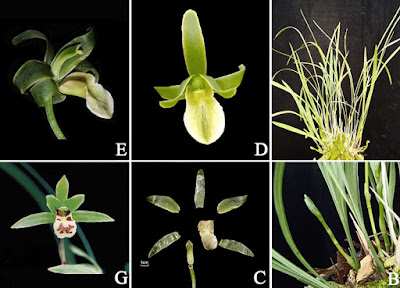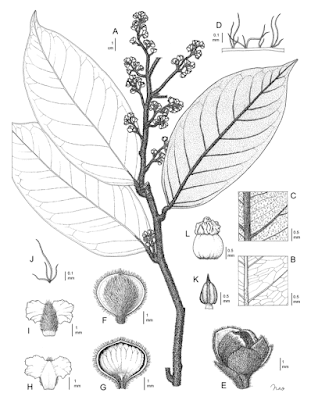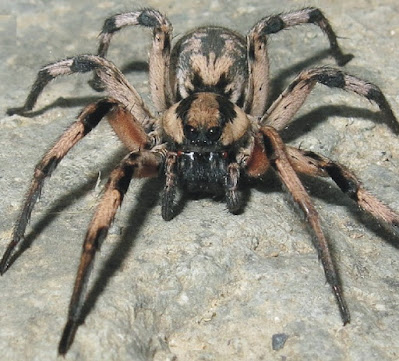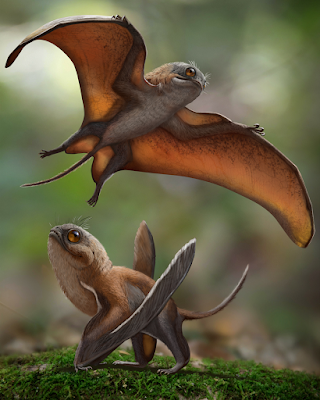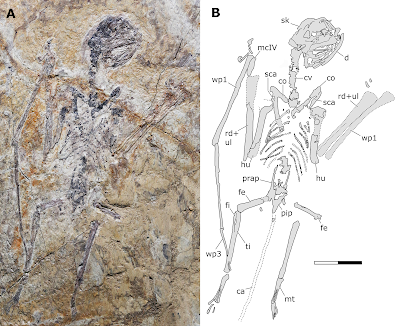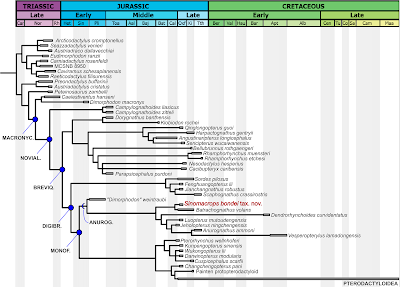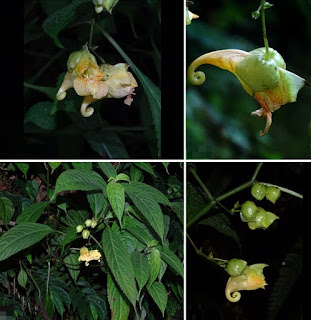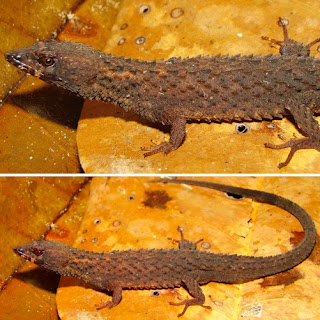[Most Recent Entries] [Calendar View]
Thursday, April 1st, 2021
| Time | Event | ||||
| 2:52a | [Botany • 2021] Cymbidium xichouense (Orchidaceae: Epidendroideae) • A New Species from Yunnan, China: Evidence from Morphological and Molecular Data
Abstract A new species of Cymbidium (Orchidaceae), Cymbidium xichouense, from Yunnan Province, China, is described and illustrated based on morphological evidence and molecular analyses. The new orchid is morphologically similar to C. qinbeiense, but it has several morphological features that distinguish it from C. qiubeinense and all other recognized species in Cymbidium. Phylogenetic analyses based on nuclear (ITS) and plastid DNA (matK) were conducted, and the results also supported the status of C. xichouense as a new species, which is sister to C. qiubeiense. Keywords: Cymbidium, Chinese orchids, Cymbidieae, Cymbidiinae, Cymbidium section Jensoa, Cymbidium xichouense, orchids of Yunnan, Monocots
Cymbidium xichouense X.Y.Xu, C.C.Ding & S.R.Lan sp. nov. (西畴兰) Etymology:— Referring to the area in Yunnan Province where the species was found, derived from the Chinese Xichou. Xinyu Xu, Chang-Chun Ding, Wenqi Hu, Xia Yu, Yu Zheng, Diyang Zhang, Xingyu Liao, Xuedie Liu, Zhong-Jian Liu and Siren Lan. 2021. Cymbidium xichouense (Orchidaceae; Epidendroideae), A New Species from China: Evidence from Morphological and Molecular Data. Phytotaxa. 484(3); 291-297. DOI: 10.11646/phytotaxa.484.3.4 | ||||
| 4:01a | [Botany • 2021] Three New Species of Erycibe (Convolvulaceae) from Malesia
Abstract As part of a comprehensive review of the genus Erycibe (Convolvulaceae) in South-East Asia, three new species are described and illustrated: Erycibe sangiheensis Kochaiph. & Utteridge sp. nov. from Sangihe Island, North Sulawesi Province in Indonesia and two from Borneo (E. trichocarpa Kochaiph. & Utteridge sp. nov. and E. brunneopilosa Kochaiph. & Utteridge sp. nov.). A distribution map, line drawings and preliminary IUCN conservation assessments are provided for all three species. Keywords: Borneo, Erycibeae, South-East Asia, Malaysia, Indonesia, taxonomy, Solanales, Eudicots Erycibe brunneopilosa Kochaiph. & Utteridge sp. nov. Erycibe trichocarpa Kochaiph. & Utteridge sp. nov. Phongsakorn Kochaiphat, Paweena Traiperm and Timothy M. A. Utteridge. 2021. Three New Species of Erycibe (Convolvulaceae) from Malesia. Phytotaxa. 494(1); 103–112. DOI: 10.11646/phytotaxa.494.1.6 | ||||
| 7:34a | [Arachnida • 2017] Lycosa aragogi • A New Species of Burrowing Wolf Spiders (Araneae: Lycosidae: Lycosa) from Iran
With over 2400 species in 123 genera, Lycosidae is one of the largest spider families (WSC 2017). For over two hundred years, the type genus Lycosa Latreille, 1804 have accumulated large-sized wolf spiders from all over the world. Thus, with 218 nominal species, this genus is distributed in all zoogeographical regions (WSC 2017). Almost none of the species currently classified in Lycosa appear to be related to the type species—L. tarantula (Linnaeus, 1758); hence, the genus is polyphyletic and should be divided into several genera. This process has been already started; for example, in Australia and New Zealand where many of large wolf spiders have been removed from Lycosa (Roewer 1955, 1959, 1960; Vink 2002; Framenau & Baehr 2016). Also, some Holarctic, Neotropic and Afrotropic species were transferred from Lycosa to other genera (for a complete list of references see WSC 2017). In the Palaearctic, Lycosa is represented by 60 species (WSC 2017) and remains almost unrevised. From the southern Palaearctic, Saharo-Gobian desert region (Yemel’yanov 1974), 36 species of Lycosa have been recorded to date, 6 of which are poorly described (WSC 2017). Keywords: Araneae, Lycosidae, Lycosa
Lycosa aragogi sp. nov. Diagnosis. Lycosa aragogi sp. nov. differs from other species of the genus by having two well-developed anterior epigynal pockets and a deep incision between them (Fig. 1, indicated by arrow). Remarks. According to taxonomic characters for Lycosidae proposed by Zyuzin (1990), L. aragogi sp. nov. belongs to subfamily Lycosinae Simon, 1898: this species has large size, high cephalic area of carapace and setae on epigynal septum. Based on the morphology of male copulatory organs, Dondale (1986) divided Lycosinae into Lycosa and Trochosa groups. A similar subdivision was made by Zyuzin (1990, 1993) based on both male and female morphology. He divided Lycosinae into two tribes: Lycosini Sundevall, 1833, characterised by non-anchor-shaped epigynal septum and Trochosini Zyuzin, 1990, characterised by anchor-shaped epigynal septum. According to this character, L. aragogi sp. nov. should belong to the Lycosini. As reported by Dondale (1986), representatives of the Lycosa group include Alopecosa Simon, 1885, Arctosa C.L. Koch, 1847, Hygrolycosa Dahl, 1908, Lycosa, Melocosa Gertsch, 1937 and Varacosa Chamberlin & Ivie, 1942. Zyuzin (1993: 699) proposed to include in Lycosini “members of Lycosa s.str. with their very peculiar genitalia, and some allied species referred to ‘Allocosa’, ‘Hogna’ and probably Metatrochosina (Roewer, 1959-1960, figs 124, 126, 129, 219, 304-305, 517)”. In general, the structure of vulva of L. aragogi sp. nov. is similar to those of L. praegrandis and L. tarantula (Fig. 2; Logunov 2010: fig. 27), by having massive folds (invaginations), which are perhaps copulatory ducts. We placed L. aragogi sp. nov. in Lycosa on the basis of structures of vulva and shape of septum, which is not anchor-shaped. Still, presence of anterior epigynal pockets distinguishes L. aragogi sp. nov. from L. praegrandis and L. tarantula. To our opinion, L. aragogi sp. nov. has quite peculiar structure of epigyne and probably should belong to a separate new genus. This problem could be solved after studying the copulatory organs of the males. Etymology. This species is named after Aragog, the famous fictional spider from “Harry Potter” book series by J.K. Rowling, in a reference to the similarities between this species and the animatronic puppet version of the character used in the film “Harry Potter and the Chamber of Secrets”, which is actually based on a wolf spider. Comments. The habitat was a mountainous area with xerophyte vegetation, mostly consisting of Astragalus sp. The specimen was collected from inside its burrow, which was made in a stony slope. Somatic characters (carapace profile, scopula and spinules on legs) of L. aragogi sp. nov. are equivalent to structural and functional features of burrowing wolf spiders, as proposed by Zyuzin (1990). Anton A. Nadolny and Alireza Zamani. 2017. A New Species of Burrowing Wolf Spiders (Araneae: Lycosidae: Lycosa) from Iran. Zootaxa. 4286(4); 597–600. DOI: 10.11646/zootaxa.4286.4.13 | ||||
| 9:32a | [Paleontology • 2021] Sinomacrops bondei • A New Anurognathid Pterosaur (Anurognathidae: Batrachognathinae) from the Jurassic of China and Comments on the Group
Abstract Anurognathids are an elusive group of diminutive, potentially arboreal pterosaurs. Even though their monophyly has been well-supported, their intrarelationships have been obscure, and their phylogenetic placement even more. In the present work, we present a new genus and species from the Middle-Late Jurassic Tiaojishan Formation, the third nominal anurognathid species from the Jurassic of China. The new species provides new information concerning morphological diversity for the group. Furthermore, we provide a new phylogenetic analysis incorporating into a single data set characters from diverging phylogenetic proposals. Our results place them as the sister-group of Darwinoptera + Pterodactyloidea, as basal members of the Monofenestrata. Systematic Paleontology Pterosauria Owen, 1842 Novialoidea Kellner, 2003 Breviquartossa Unwin, 2003 Monofenestrata Lü et al., 2009 Anurognathidae Kuhn, 1937 Batrachognathinae Kellner et al., 2010 Definition. The most inclusive clade containing Batrachognathus volans but not Anurognathus ammoni (Kellner et al., 2010). Synapomorphies. Humeral deltopectoral crest reduced (less wide than humeral shaft; and less wide than proximodistally long), humeral deltopectoral crest subrectangular, ulnar crest of humerus rounded, humeral/femoral length ratio over 1.60, tibial/femoral length ratio over 1.70. Included species. Batrachognathus volans and Sinomacrops bondei gen. et sp. nov. Sinomacrops bondei gen. et sp. nov. Etymology. The generic name is a combination of Sino, macro and ops; which are Ancient Greek for China, large, and eyes/face, respectively. This is in reference to both the large eyes and the broad faces that are typical of anurognathids, and to the Chinese origin of the new species. The specific epithet honors paleontologist Niels Bonde, for his many scientific contributions and being an inspiration for us. Locality and horizon. Mutoudeng, Qinglong County of Hebei Province. Daohugou Beds (Callovian-Oxfordian 164-158 Ma) of the Tiaojishan Formation (see Liu, Zhao & Liu 2006; Liu et al., 2006; Gao & Shubin, 2012). Diagnosis. The new taxon exhibits two autapomorphies: first three maxillary alveoli closely spaced, and tibiotarsus twice as long as the femur.
Conclusions: JZMP-2107500095 represents a new anurognathid, here named Sinomacrops bondei (Fig. 14). It is the second anurognathid from the Tiaojishan Formation, and the first anurognathid specimen to exhibit a skull exposed in lateral view. In our new phylogenetic analysis, it is recovered as the sister-group of Batrachognathus volans, with which it comprises the Batrachognathinae. All other taxa were recovered as closer to Anurognathus. The exclusion of Luopterus mutoudengensis from the genus Dendrorhynchoides is corroborated. Vesperopterylus lamadongensis is recovered as the sister-group of Anurognathus ammoni, with Jeholopterus ningchengensis as their successive sister-group. Some previous interpretations of anurognathid morphology and systematics have relied on limited available information. With time and new specimens being discovered, new data have been provided and new interpretations were presented. For this reason, each new specimen is crucial for the understanding of the group. The present information available leads us to interpret anurognathids as basal members of the Monofenestrata, as the sister-group of Darwinoptera + Pterodactyloidea. Xuefang Wei, Rodrigo Vargas Pêgas, Caizhi Shen, Yanfang Guo, Waisum Ma, Deyu Sun and Xuanyu Zhou. 2021. Sinomacrops bondei, A New Anurognathid Pterosaur from the Jurassic of China and Comments on the Group. PeerJ. 9:e11161. DOI: 10.7717/peerj.11161 | ||||
| 9:50a | [Botany • 2020] Impatiens bakthangensis (Balsaminaceae) • A New Species from Sikkim, India
Abstract Impatiens bakthangensis sp. nov. a new species of Impatiens is described from the Bakthang area of Gangtok, East district of Sikkim (northeast India). With its distinctly bucciniform lower sepals, the new species is similar to I. duclouxii and I. discolor with which it has previously been confused, but differs in several floral characters. Detailed descriptions, distribution and discussion of ecology are provided, along with colour photographs. Keywords: balsams, East Sikkim, eastern Himalaya, new taxa Impatiens bakthangensis Chhetri, Sherpa & Gogoi sp. nov. Rajib Gogoi, Norbu Sherpa and Geetamani Chhetri. 2020. Impatiens bakthangensis sp. nov. (Balsaminaceae): A New Species from Sikkim, India. Nordic Journal of Botany. 38(10); DOI: 10.1111/njb.02872 | ||||
| 10:05a | [Herpetology • 2021] Kataphraktosaurus ungerhamiltoni • Discovery of An Additional Piece of the Large Gymnophthalmid Puzzle: A New Genus and Species of Stream Spiny Lizard (Gymnophthalmidae: Cercosaurinae) from the western Guiana Shield in Venezuela
Abstract Gymnophthalmids are a highly diverse group of Neotropical lizards and its species richness is still in process of discovery. The incorporation of molecular evidence and a noticeable increase in taxon and geographic sampling in systematic studies has led to the description of numerous new genera and species of gymnophthalmids (particularly in Cercosaurinae) in recent years. Herein we describe a new genus and species of cercosaurine lizard with crocodile-like morphology, from the Venezuelan Guiana Shield on the basis of molecular phylogenetic and morphological evidence. Kataphraktosaurus gen. nov. can be readily distinguished from all other genera of Cercosaurinae by a unique combination of morphological characters that includes heterogeneous dorsal scalation with enlarged and strongly keeled scales forming two paravertebral rows, ventral and subcaudal scales imbricated and strongly keeled, large and symmetrical cephalic scales, absence of postmental scale, palpebral disc translucent and divided, tail slightly compressed, all digits clawed, and only six femoral pores (three at each hindlimb) inserted in a clump of small scales. This genus is described as monotypic and only contains Kataphraktosaurus ungerhamiltoni sp. nov., which is known from one specimen and diagnosed by the same set of aforementioned characters. The secretive habits of this species and the remoteness of the locality may explain its singleton situation. Following the International Union for Conservation of Nature’s criteria, we categorized the new species as Data Deficient. Keywords: Reptilia, Amazonia, biodiversity, Neotropics, Orinoco basin, phylogeny, reptile, systematics, taxonomy Kataphraktosaurus ungerhamiltoni sp. nov. Fernando J.M. Rojas-Runjaic, César L. Barrio Amorós, J. Celsa Señaris, Ignacio De la Riva and Santiago Castroviejo-Fisher. 2021. Discovery of An Additional Piece of the Large Gymnophthalmid Puzzle: A New Genus and Species of Stream Spiny Lizard (Squamata: Gymnophthalmidae: Cercosaurinae) from the western Guiana Shield in Venezuela. Zootaxa. 4950(2); 296–320. |
| << Previous Day |
2021/04/01 [Calendar] |
Next Day >> |
